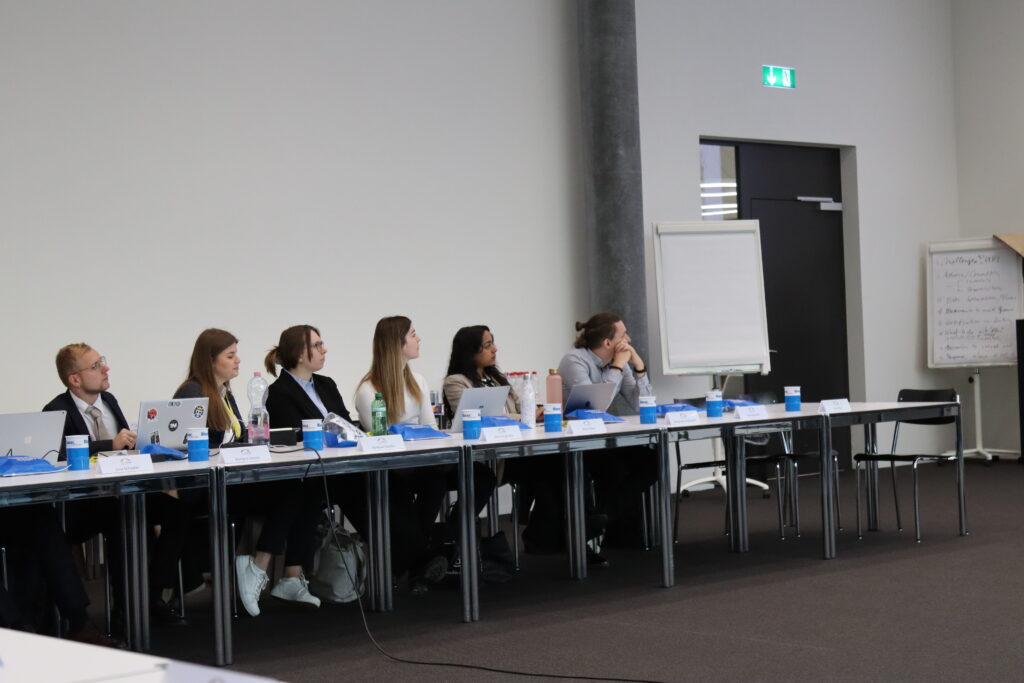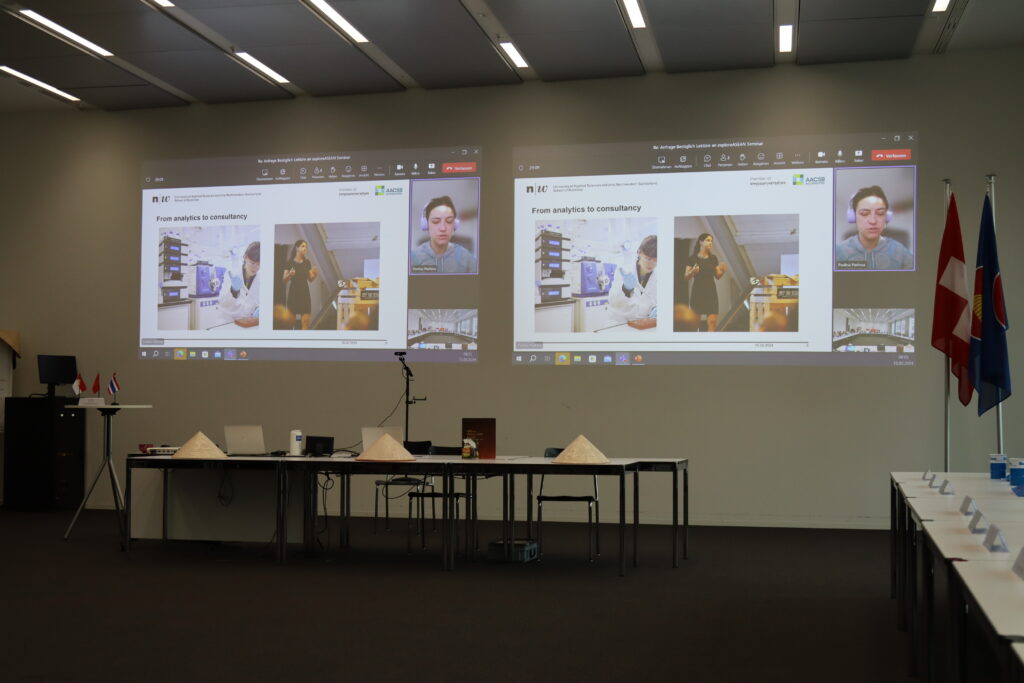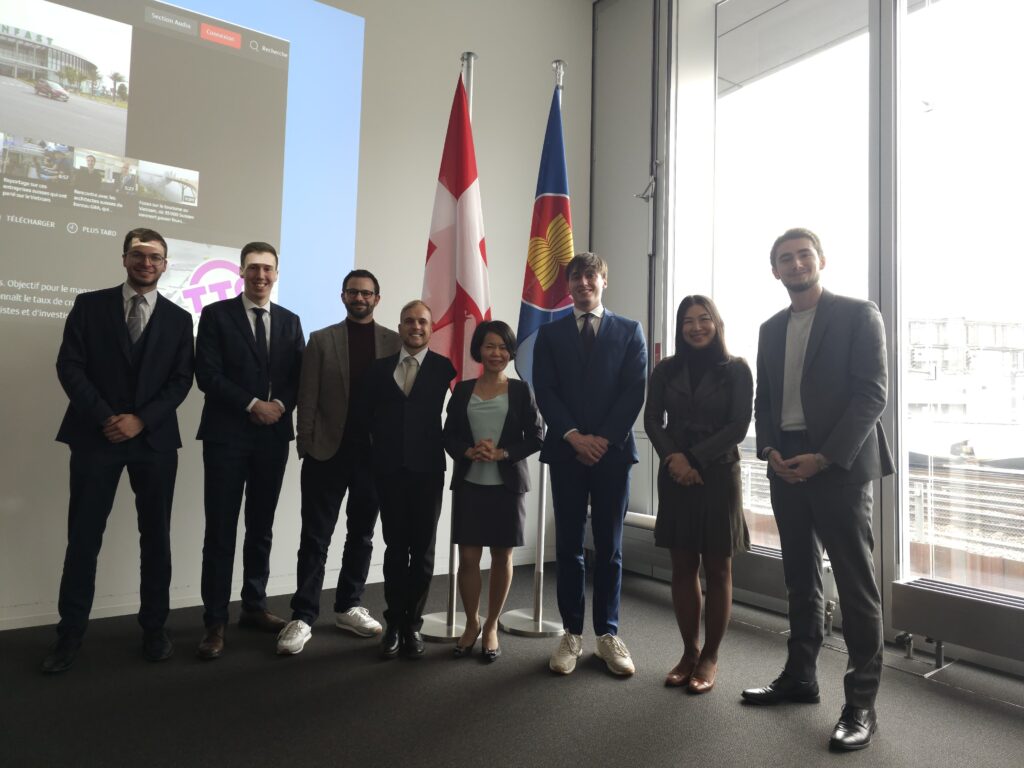Delegation Blogpost – Seminar Recap #4
Circular Economy: From the UN SDGs to Donut Economy
Dr. Pavlina Pavlova lectured on Circular Economy as a pathway to reach climate goals. The UN’s Sustainable Development Goals (SDGs) are a set of objectives aimed at promoting global prosperity, protecting the planet, and ensuring peace. The integration of circular economy principles into the implementation of the SDGs is considered crucial to achieving sustainable development.
Learnings and Key Takeaways
The circular economy aims to reduce waste and pollution, promote resource efficiency, and regenerate nature. Donut Economics poses the question of how to achieve a minimum level of prosperity for all without exceeding the maximum allowable environmental impact. These concepts emphasize the need for a holistic and integrative approach to ecological, social, and economic challenges for a sustainable future. It is emphasized that the circular economy aims not only to recycle waste, but also to keep products and materials in high-value loops. This holistic approach includes reducing waste and inefficiency, promoting resource efficiency, and creating new business models based on circular principles. By implementing circular economy concepts, companies can tap into new markets, enhance their competitiveness, and make a positive contribution to the environment. The circular economy is highlighted as the key to creating a sustainable,
climate-resilient future reconciling ecological, social, and economic goals.
Links to our Seminar Abroad
In summary, we have learned that the circular economy aims to minimize waste and pollution while promoting resource efficiency and nature regeneration. This underscores the need to transition from linear consumption patterns to more sustainable practices that reduce environmental impact. During group work, we analyzed the product lifecycle of everyday items. We considered which stage of the product lifecycle consumes the most resources and where we can strive for improvements in favor of the circular economy.
All these themes are reflected in our upcoming trip to Thailand, Vietnam, and Singapore. Vietnam, Thailand, and Singapore are all rapidly developing economies with growing industries. Companies in these countries may seek ways to integrate circular economy principles into their operations to improve resource efficiency, reduce waste, and increase sustainability.
Conclusion
In conclusion, looking at the discussion around the circular economy shows us that moving towards such an economy can really help solve environmental problems and support sustainable growth. By looking at what’s happening in Singapore, Vietnam and Thailand, we can see examples of how using circular economy ideas can change the way businesses operate, moving from simply using things up to renewing and reusing resources. These examples help us understand how these ideas can be used everywhere to make better use of resources and create less waste. So, moving towards a circular economy is an important step
in ensuring that our economic activities do not harm the environment, and working towards a future where we can all thrive without harming our planet.
Authors: Daksahaini Chellapah & Linda Tran


Sustainability at SIEMENS
Mario Fürst, who has worked at Siemens for more than 12 years, gave us an insight into Siemens in terms of sustainability. We were introduced to various projects where Siemens was or is a technical supplier. The projects include Stoelze Glas Group, which has reduced CO2 and energy consumption in glass production and Hugo Beck Machine Building, which focuses on sustainable packaging. Ms. Sireena gave us a demonstration of the SiGREEN program as well. SiGREEN is a web app program in which the dynamic carbon footprint can be recorded for the entire supply chain of a product (Dynamic Product Carbon Footprint PCF). Target groups include the automotive, chemical, pharmaceutical and food industries.
Key takeaways and learnings
Sustainability has many different facets and can play out in different ways. Sustainability can for example be improved together with digitalization.
A further topic was digital twins. A digital twin is used to simulate and determine the best possible variant. For an example, thanks to digital twins, bionic arm prostheses can be developed in which the user can safely hold a cup. This would be a difficult task for a traditional prosthesis. Another example is “Siemens City Graph”, which is a digital twin of a Smart City. Real-time data is analyzed and a recommendation for action can be generated.
Siemens has set up the DEGREE framework to ensure sustainability at various levels. Each letter stands for an area.
Decarbonization – Pursuing the 1.5°C global warming target.
Ethics – To live a culture of trust, careful handling of data and respect for ethical standards.
Governance – For effective and responsible business conduct using state-of-the-art systems.
Resource efficiency & circularity – To achieve dematerialization and a circular economy.
Equity – To promote a sense of belonging, diversity, inclusion and community development.
Employability – Supporting employees to develop in a constantly changing environment.
Links to our topics
Siemens has several projects that relate to our topics. The benefits of digitalization can be demonstrated by the Stoelze Glass Group. The company manufactures packaging glass, which for example is used in the pharmaceutical and perfumery industries. They pursue the overall goal of improving efficiency and reducing costs. Process and energy optimization can be achieved with an energy management system from Siemens. Data points, especially in the energy-intensive areas, are collected, stored and evaluated. Successes have already been achieved at the main site in Austria, where monitoring has made it possible to reduce water consumption and energy requirements. The software can also measure compressed air consumption and detect leaks at an early stage.
Conclusion
It will be interesting to see how the companies in the visiting destinations approach sustainability and how they implement it. A hint that we received from Mr. Fürst is that if you are open to other cultures, you may be able to better understand why something is done the way it is.
Authors: Anna Jörgensen & Lorenza Bacher

